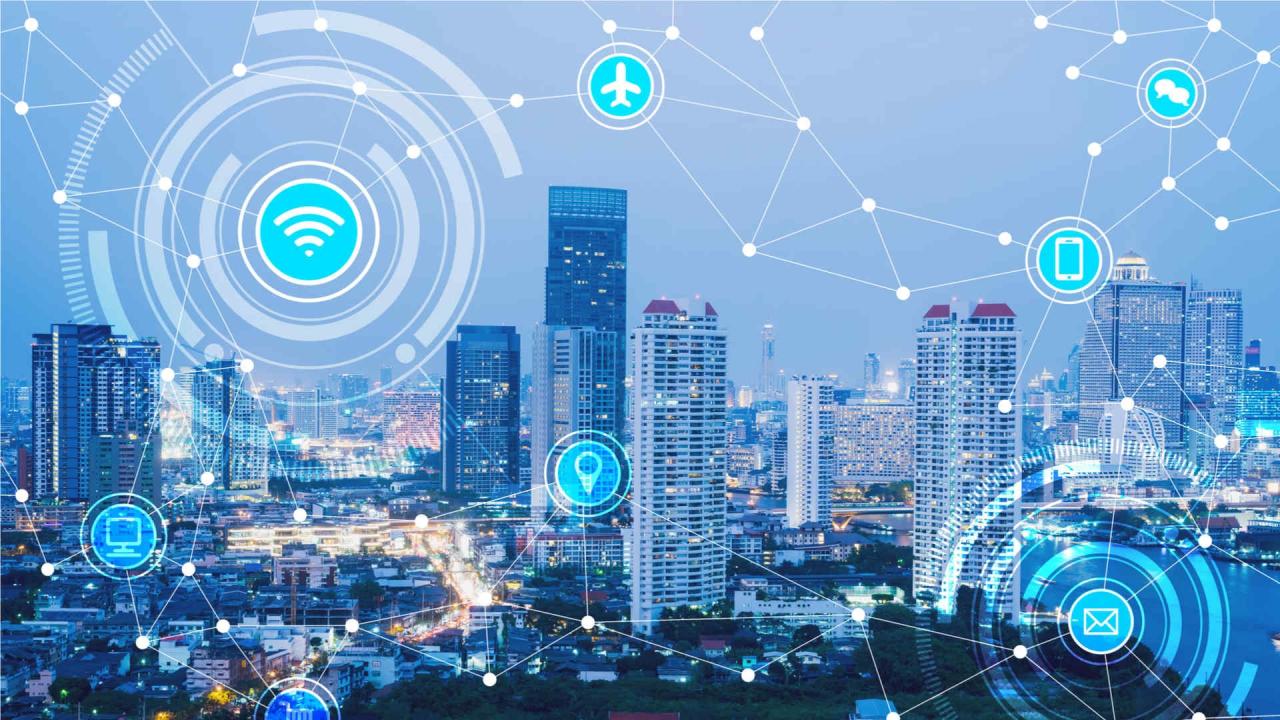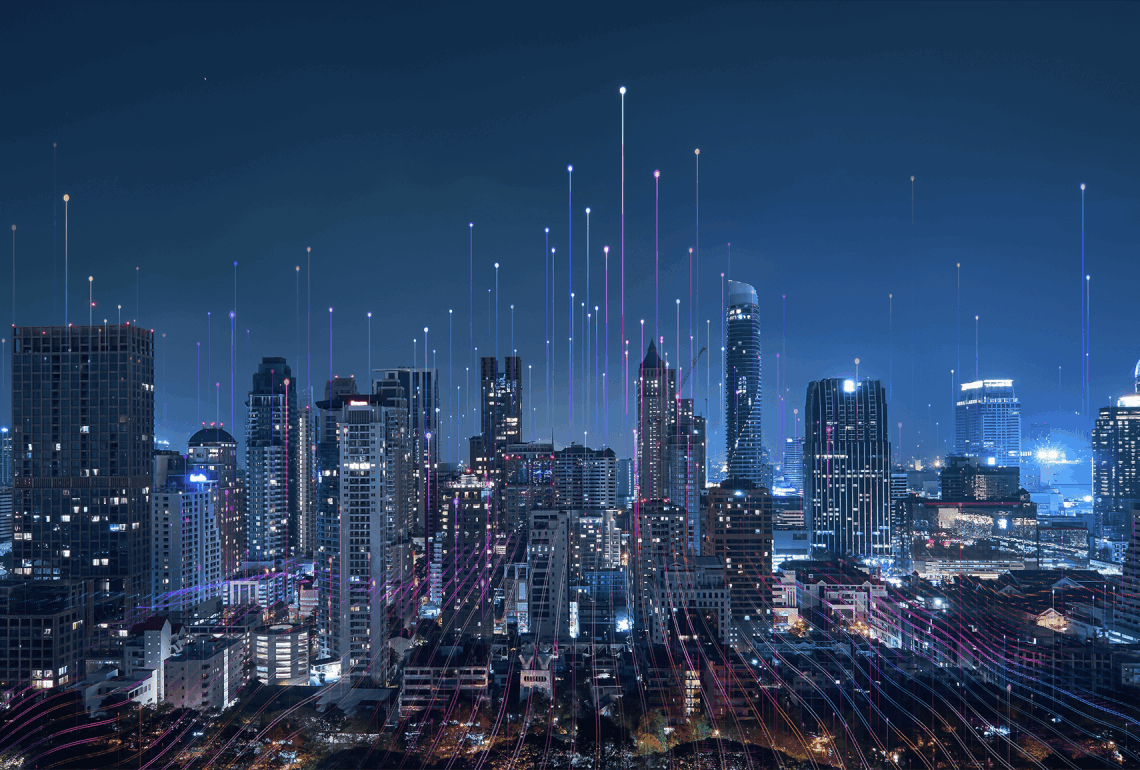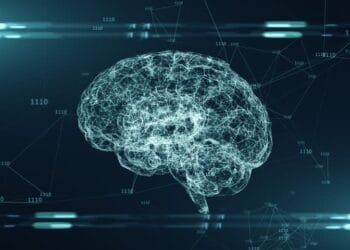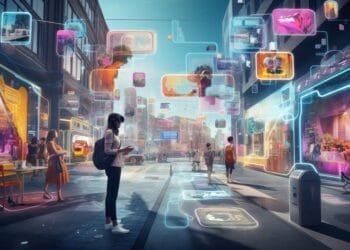In an era of unprecedented urbanization and rapid technological advancement, a profound vision is transforming how our urban centers function: the emergence of Smart Cities. Far from mere futuristic concepts, these intelligent urban environments leverage cutting-edge technology and data-driven insights to enhance livability, efficiency, sustainability, and citizen well-being. From optimizing traffic flow and managing waste to improving public safety and conserving energy, smart cities are fundamentally reshaping urban life, creating more responsive and resilient communities. This comprehensive article delves into the core principles of smart cities, exploring their foundational technologies, the diverse applications across various urban domains, and the critical challenges that accompany their widespread development.
What is a Smart City?

At its essence, a smart city is an urban area that uses various types of electronic methods and sensors to collect data. Insights gained from that data are then used to manage assets, resources, and services efficiently. This involves a collaborative effort between government, technology providers, and citizens to create a more livable, sustainable, and economically viable urban environment. It’s about leveraging the power of connectivity and data to make cities more intelligent and responsive to the needs of their inhabitants.
Think of a smart city as a living organism with a sophisticated nervous system. The sensors are its senses, collecting real-time data from every corner. The networks are its communication channels, transmitting that data. The data platforms and analytics are its brain, processing information and generating insights. And the smart applications are its actions, translating those insights into improved services and enhanced quality of life for citizens.
Key characteristics defining a smart city include:
- Connectivity: Ubiquitous networks (Wi-Fi, 5G, LoRaWAN) connecting devices, sensors, and people across the urban environment.
- Data Collection and Analytics: Extensive use of sensors and digital platforms to gather real-time data from infrastructure, services, and citizens, which is then analyzed to derive actionable insights.
- Integrated Systems: Interoperable systems that allow different urban domains (e.g., transportation, energy, waste) to communicate and share data, leading to holistic optimization.
- Citizen Engagement: Technologies and platforms that enable citizens to actively participate in urban governance, provide feedback, and access public services seamlessly.
- Sustainability: Focus on reducing environmental impact through optimized resource consumption, renewable energy integration, and efficient waste management.
- Innovation: A culture that fosters technological experimentation and embraces new solutions to urban challenges.
- Enhanced Livability: Improving the quality of life for residents through better services, safer environments, and more efficient resource use.
A. Foundational Technologies Driving Smart City Development
The realization of smart cities relies on the convergence and maturation of several advanced technologies, each playing a crucial role in collecting, processing, and acting upon urban data.
- Internet of Things (IoT): This is the backbone of a smart city’s data collection. IoT devices, embedded with sensors and connectivity, are deployed across the urban landscape to gather real-time data.
- Examples: Smart streetlights that detect motion and adjust brightness, waste bins with fill-level sensors, traffic cameras monitoring vehicle flow, environmental sensors tracking air quality, smart parking sensors.
- Role: Provides the “eyes and ears” for the city, generating the raw data needed for intelligent management.
- Big Data Analytics: The sheer volume, velocity, and variety of data generated by IoT devices require sophisticated tools for processing, analyzing, and deriving actionable insights.
- Role: Identifies patterns, predicts trends (e.g., traffic congestion, energy demand), and uncovers relationships within urban data to inform decision-making.
- Technologies: Data lakes, data warehouses, real-time streaming analytics platforms, distributed processing frameworks (like Apache Spark).
- Artificial Intelligence (AI) and Machine Learning (ML): AI and ML algorithms are crucial for making sense of the vast urban datasets, enabling predictive capabilities, automation, and intelligent decision-making.
- Examples: AI-powered traffic light optimization, predictive policing, facial recognition for security, intelligent chatbots for citizen services, AI for energy grid optimization.
- Role: Transforms raw data into intelligent actions, enabling systems to learn, adapt, and operate autonomously or augment human decision-makers.
- Cloud Computing and Edge Computing:
- Cloud Computing: Provides scalable and flexible infrastructure for storing massive amounts of urban data, running complex AI/ML models, and hosting city-wide applications.
- Edge Computing: Processes data closer to the source (e.g., on traffic cameras, smart light poles) to reduce latency, save bandwidth, and enable real-time decision-making for critical applications like autonomous vehicles or immediate incident response.
- Role: Provides the necessary computational power and data storage hierarchy for efficient urban data management.
- High-Speed Connectivity (5G/6G): The widespread deployment of low-latency, high-bandwidth networks like 5G is essential for real-time data transmission between millions of IoT devices and central platforms.
- Role: Acts as the “nervous system” of the smart city, ensuring seamless communication and responsiveness for critical applications.
- Digital Twin Technology: Creating virtual replicas of physical city assets (e.g., buildings, bridges, entire districts) or processes. These digital twins are constantly updated with real-time data from sensors.
- Role: Allows urban planners and managers to simulate scenarios, test interventions, predict outcomes, and optimize operations in a virtual environment before implementing them physically.
- Geographic Information Systems (GIS): Platforms that capture, store, analyze, and manage all types of geographical data.
- Role: Provides the spatial context for urban data, allowing for location-based analysis, mapping, and visualization of smart city initiatives.
Smart Cities’ Transformative Impact Across Key Domains
The pervasive influence of smart cities is fundamentally reshaping urban governance, service delivery, and the daily lives of citizens across a remarkably diverse range of domains.
A. Smart Mobility and Transportation
Optimizing urban mobility is a cornerstone of smart cities, aiming to reduce congestion, improve public transport, and enhance safety.
- Intelligent Traffic Management: IoT sensors embedded in roads and traffic lights, combined with AI, monitor real-time traffic flow, pedestrian movement, and incident data. This enables dynamic signal timing, adaptive routing suggestions, and proactive congestion management, significantly reducing travel times and fuel consumption.
- Optimized Public Transportation: Real-time data from buses, trains, and ride-sharing services, combined with predictive analytics, optimizes routes, schedules, and vehicle allocation, leading to more efficient and reliable public transport systems and reduced wait times.
- Smart Parking Systems: Sensors detect vacant parking spots and guide drivers to them via mobile apps or digital signage, reducing circling time, traffic congestion, and associated carbon emissions, especially in busy urban centers.
- Autonomous Vehicles and Infrastructure: Smart city infrastructure (e.g., V2X communication, smart intersections) supports the safe and efficient integration of autonomous vehicles into urban environments, potentially leading to fewer accidents and smoother traffic flow.
- Micro-Mobility Management: IoT tracking and geofencing technologies help manage shared e-scooters and e-bikes, optimizing their distribution and ensuring responsible usage and parking.
B. Smart Utilities and Energy
Smart cities aim to optimize resource consumption, integrate renewable energy, and build resilient utility networks.
- Smart Grids: IoT sensors monitor electricity demand and supply in real-time, allowing utilities to optimize energy distribution, reduce waste, and integrate renewable energy sources more efficiently, leading to reduced blackouts and lower energy costs.
- Smart Water Management: Sensors detect leaks in water pipelines, monitor water quality, and manage irrigation systems for public spaces, leading to significant water conservation and improved public health.
- Intelligent Street Lighting: IoT-enabled streetlights equipped with motion and light sensors automatically adjust their brightness based on pedestrian and vehicle traffic and ambient light conditions, leading to substantial energy savings and reduced light pollution.
- Waste Management Optimization: Smart bins with fill-level sensors alert waste collection services when they need emptying, allowing for optimized collection routes, reducing fuel consumption, and improving urban cleanliness.
- Renewable Energy Integration: Data analytics helps cities understand and predict renewable energy generation from sources like solar and wind, enabling better integration into the city’s energy mix.
C. Public Safety and Security
Smart cities leverage technology to enhance public safety, emergency response, and overall urban security.
- Predictive Policing: Data analytics identifies crime hotspots and predicts potential criminal activity based on historical data, allowing law enforcement to allocate resources more effectively and proactively prevent crime.
- Emergency Response Systems: IoT sensors and smart cameras can detect incidents (e.g., accidents, fires, gunshots) and immediately alert emergency services, providing real-time data to first responders for faster and more effective intervention.
- Video Surveillance and Analytics: AI-powered video analytics on public cameras can detect suspicious behavior, manage crowds, and identify specific events, aiding law enforcement while raising privacy concerns that need careful ethical consideration.
- Disaster Preparedness and Response: Data from weather sensors, flood monitors, and seismic sensors, combined with predictive models, helps cities prepare for natural disasters, issue timely warnings, and coordinate emergency relief efforts more effectively.
- Environmental Monitoring for Health: Real-time monitoring of air quality, pollen counts, and heat islands provides crucial data for public health alerts and informs urban planning decisions to mitigate environmental health risks.
D. Smart Governance and Citizen Services
Smart cities aim to improve the efficiency, transparency, and accessibility of public services, fostering greater citizen engagement.
- Digital Citizen Portals: Online platforms and mobile apps provide a single point of access for citizens to request services (e.g., report potholes, apply for permits), pay bills, and access public information, streamlining interactions with government.
- Open Data Initiatives: Governments make non-sensitive urban data publicly available, fostering transparency, enabling third-party innovation, and allowing citizens to hold their leaders accountable.
- Citizen Feedback Systems: Digital platforms allow citizens to provide feedback on urban services, participate in polls, and contribute ideas for city improvement, fostering a more participatory governance model.
- Personalized Public Information: Leveraging data to provide citizens with personalized alerts (e.g., traffic updates, public transport delays, localized weather warnings) relevant to their specific location and preferences.
- Automated Regulatory Compliance: Using IoT data and AI to automate monitoring and ensure compliance with urban regulations (e.g., noise pollution levels, waste disposal rules).
E. Smart Buildings and Infrastructure
Applying smart technologies to buildings and infrastructure enhances their efficiency, sustainability, and occupant comfort.
- Energy Management Systems: Sensors and automated controls optimize heating, ventilation, and air conditioning (HVAC), lighting, and other building systems based on occupancy, time of day, and external conditions, significantly reducing energy consumption.
- Predictive Maintenance for Infrastructure: Sensors on bridges, roads, and utilities monitor structural integrity and performance, alerting authorities to potential issues before they become critical, reducing repair costs and improving safety.
- Occupancy Management: Sensors track building occupancy to optimize lighting, climate control, and cleaning schedules, improving resource allocation and operational efficiency.
- Security and Access Control: Smart locks, surveillance cameras, and access control systems enhance building security and manage entry/exit points more efficiently.
- Indoor Air Quality Monitoring: Sensors monitor indoor air pollutants, humidity, and temperature, providing data to optimize ventilation systems and ensure healthy indoor environments.
Challenges and Considerations in the Rise of Smart Cities

Despite their immense promise, the widespread development and deployment of smart cities face significant challenges and critical ethical considerations that demand careful attention and proactive solutions.
A. Data Privacy and Security
- Massive Data Collection: Smart cities rely on collecting vast amounts of data from citizens, vehicles, and infrastructure, raising profound concerns about continuous surveillance and the erosion of individual privacy.
- Cybersecurity Vulnerabilities: The interconnected nature of smart city systems creates a massive attack surface. A successful cyberattack on critical infrastructure (e.g., power grid, traffic control) could have devastating consequences for urban life.
- Data Governance and Ownership: Questions arise about who owns the data collected in a smart city (citizens, city government, private companies) and how it is managed, used, and shared responsibly.
- Re-identification Risk: Even if data is anonymized or pseudonymized, combining disparate datasets can sometimes re-identify individuals, leading to privacy breaches.
- Lack of Transparency: Citizens often lack transparency into what data is collected about them, how it’s used, and with whom it’s shared, leading to a lack of trust.
B. Ethical and Societal Implications
- Algorithmic Bias and Discrimination: AI algorithms used in smart cities (e.g., for predictive policing, resource allocation) can perpetuate and amplify existing societal biases if trained on biased data, leading to discriminatory outcomes against certain populations.
- Surveillance State Concerns: The extensive use of cameras and sensors can lead to concerns about a “surveillance state” where citizen activities are constantly monitored, potentially chilling free speech and dissent.
- Digital Divide and Equity: The benefits of smart city technologies may not be evenly distributed, potentially exacerbating existing inequalities between tech-savvy and less connected populations, or between well-funded and underserved neighborhoods.
- Human Autonomy vs. Automation: As cities become more automated, questions arise about the role of human agency and decision-making in urban environments.
- Job Displacement: Automation driven by smart city technologies (e.g., autonomous public transport, smart waste management) could lead to job displacement in certain sectors.
C. Implementation and Management Complexities
- High Upfront Costs: Developing and deploying smart city infrastructure requires significant capital investment, often a major barrier for many cities.
- Legacy Infrastructure Integration: Integrating new smart technologies with existing, often aging, urban infrastructure and legacy IT systems is complex and challenging.
- Interoperability and Standardization: The lack of universal standards across different smart city technologies and vendors creates fragmentation, hindering seamless integration and data exchange.
- Governance and Stakeholder Collaboration: Smart city projects require complex coordination among diverse stakeholders (city government, private sector, citizens, academia) with often competing interests.
- Technical Expertise Gap: Many cities lack the in-house technical expertise to plan, implement, and manage sophisticated smart city initiatives effectively.
- Resistance to Change: Citizens and public sector employees may resist the adoption of new technologies if they are not clearly communicated or if concerns about privacy and job security are not addressed.
D. Data Management and Analytics Challenges
- Data Quality and Reliability: Ensuring the accuracy, consistency, and reliability of data from millions of disparate sensors is a continuous challenge.
- Data Volume and Velocity: Managing and processing the enormous real-time data streams generated by a smart city requires robust and scalable big data infrastructure.
- Actionable Insights: Translating raw data into meaningful, actionable insights that truly improve urban services and citizen well-being requires sophisticated analytics and skilled data scientists.
Conclusion
The rise of Smart Cities is unequivocally defining the future of urban living, transforming our metropolises into intelligent, responsive, and sustainable environments. By seamlessly integrating cutting-edge technologies, leveraging vast data streams, and fostering unprecedented levels of connectivity, smart cities promise to enhance livability, optimize resource management, and fundamentally improve the well-being of their citizens. From intelligent traffic systems and sustainable energy grids to proactive public safety and streamlined citizen services, the pervasive influence of smart cities is undeniable and rapidly expanding across the globe.
However, the journey towards building truly smart, equitable, and human-centric cities must be navigated with careful consideration. Addressing the formidable challenges of data privacy, cybersecurity, algorithmic bias, and ensuring inclusive access to technology is essential for their long-term success and ethical deployment. By fostering collaboration among urban planners, technologists, policymakers, ethicists, and active citizens, we can ensure that smart cities not only thrive technologically but also champion human values, building truly intelligent, sustainable, and just urban futures for all. Smart cities aren’t just rising; they’re redefining the very essence of urban life.












